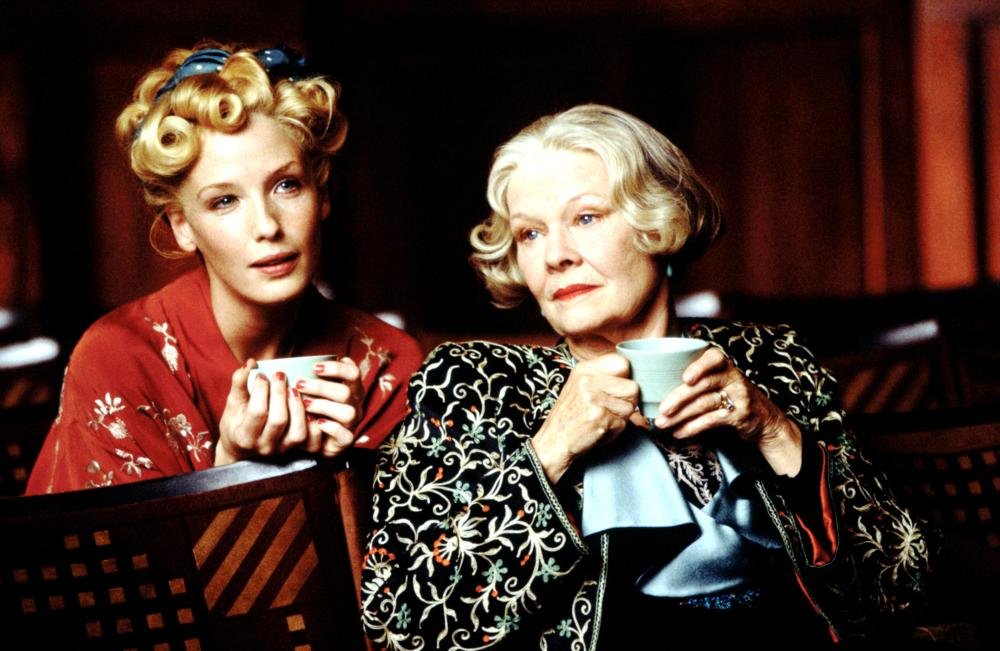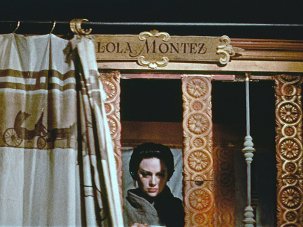Back when I was first developing a serious interest in cinema, the notion of the auteur was of almost overwhelming importance to me. The idea of a film existing not solitarily or as part of an impersonal system, but rather as the product of an individual sensibility structured and determined my experience of this art form. Crucial to the auteurist worldview was the insistence that each film, magnificent as it may be in isolation, could only take on its full meaning when considered in the context of the director’s entire oeuvre.
One of the many (mostly British) directors I snobbishly dismissed was Stephen Frears, a classicist who didn’t have the advantage of being aligned with a rich and vital Hollywood tradition (even his American films seemed somehow… well, British). Though clearly far from talentless, he was nonetheless what was disparagingly referred to as a metteur en scène, that staid figure so often compared unfavourably with the more distinctive auteur.
Yet my admiration for the intelligence and precision of Frears’s mise en scène grows each time I see one of his films, to the point where I now regard him as one of the key English-language filmmakers of his generation.
To take just a single example, note how the relationship between Tony Blair (Michael Sheen) and Queen Elizabeth II (Helen Mirren) in The Queen (2006) is signalled by the imagery accompanying their first phone conversation. The Queen stands in a room full of neatly arranged, colour-coordinated hardbacks that reek of impersonality, while Blair is juxtaposed with shelves containing books of various sizes and colours that reflect his personal tastes. Even the positioning of actors within the frame serves to reinforce Frears’s point. The Queen – ostensibly powerful but actually a woman whose every action is dictated by forces external to her – is located distantly, dominated and determined by her surroundings, whereas the dynamic and individualistic Blair cuts a more prominent figure, his head bumping against the top of the screen.
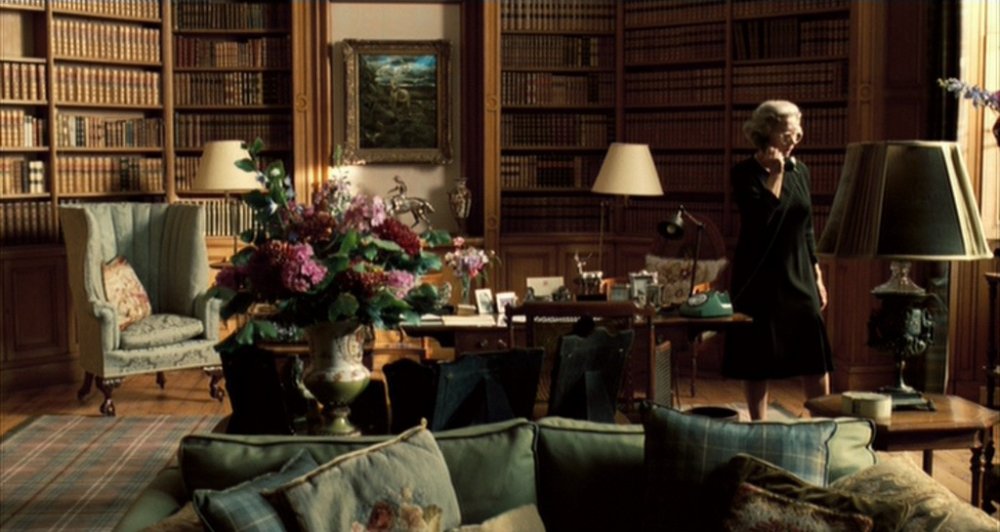
The Queen (2007)
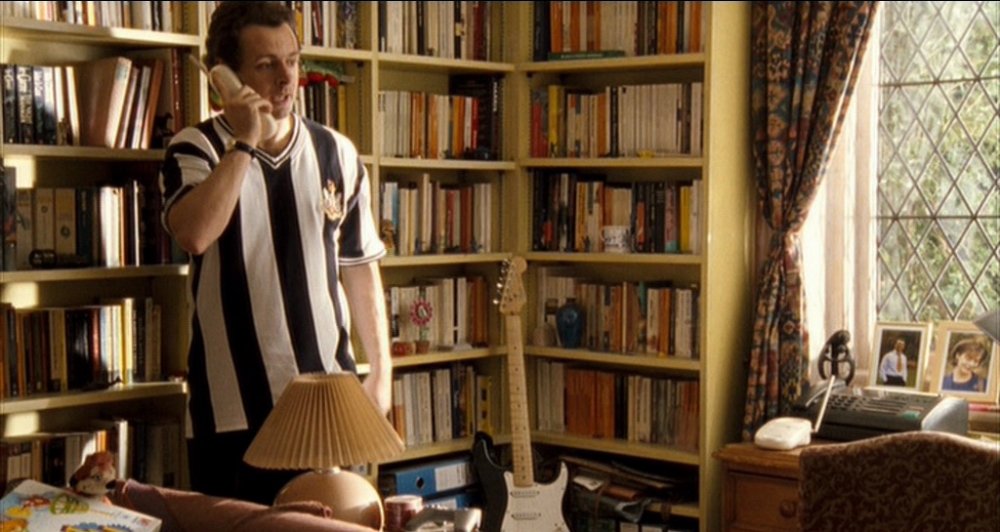
The Queen (2007)
This ability to define characters by paying meticulous attention to those ways in which they relate to their environments is typical of Frears, and suggests why many of his colleagues consider him a master.
Yet I still do not believe he can be regarded as an auteur. There obviously are connections – stylistic, thematic and structural – between his films, yet these seldom link one work to another in more than a pragmatic way. We sense not that a theme is being pursued, but rather that problems are being solved by resorting to dramatic and visual solutions which have worked before. Consider how, in both Mrs Henderson Presents (2005) and Victoria & Abdul (2017), characters played by Judi Dench are shocked to discover that men with whom they have long been engaged in close but supposedly unromantic relationships are married. Or how in both The Grifters (1990) and Mary Reilly (1996) hand injuries (either absent when they should be present or present when they should be absent) reveal that somebody is not who or what they appear. Or the way both Gumshoe (1971) and The Program (2015) use shots of individuals sitting in cafés with several coffee cups piled up before them to indicate how long they have been waiting.
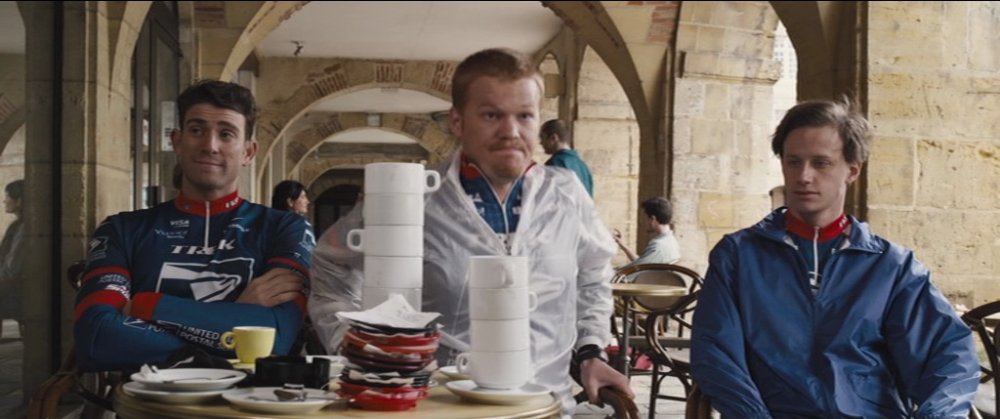
The Program (2015)
Gumshoe, Frears’s first theatrical feature, makes a neat starting point, in that its script (by Neville Smith) is based on a displacement of noir motifs, a premise which might naturally have inspired a directorial approach rooted in noir stylistics. Yet Frears’s visual choices adduce a displacement of a very different kind. The screenplay may be structured around the concept of relocating American cinematic conventions to England, but Frears’s insistence on seeing each film as a self-contained work, rather than part of a larger (generic, auteurist) project, leads him to anchor everything in character and performance, ensuring that the only relocation realised visually is embedded in the conflict between struggling nightclub comedian Eddie Ginley (Albert Finney) and his successful businessman brother William (Frank Finlay), a private dispute displaced onto a public landscape: the Liverpool where William’s export company is an increasingly prominent visual presence.
Frears’s attention to environment is also evident in his expressive use of stairs. In Mary Reilly, Dr Jekyll (John Malkovich)’s confession that (spoiler alert) he and Mr Hyde are one and the same takes place on a staircase, the perfect background for a character in transition between two identities. In Mrs Henderson Presents, Maureen (Kelly Reilly), impregnated and deserted by a soldier whose romantic overtures Mrs Henderson (Dench) encouraged, denounces the eponymous protagonist, delivering her criticisms (“You live in your own world, Mrs. Henderson”) while standing on a staircase midway between Mrs Henderson’s underground theatre and the world of messy reality.
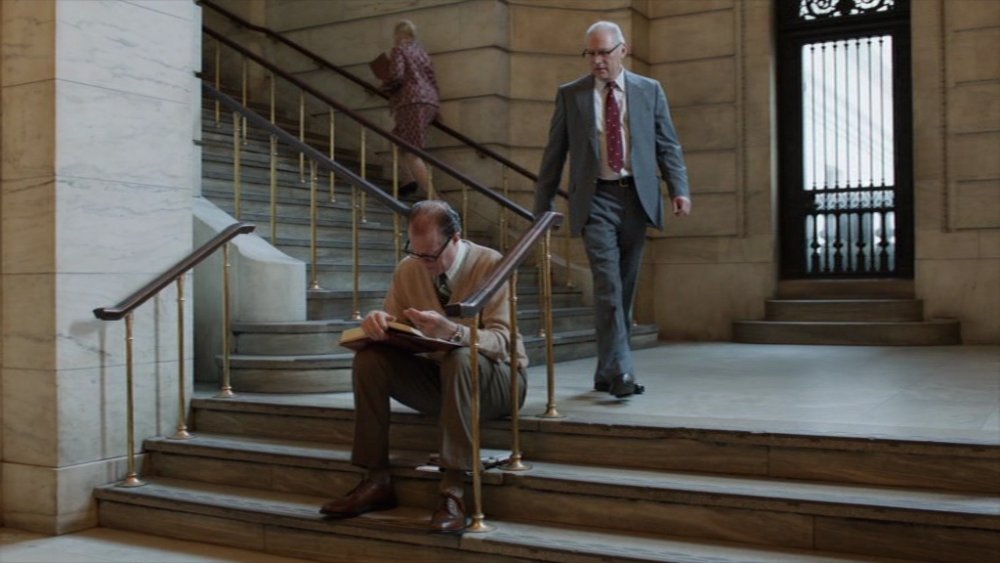
Muhammad Ali's Greatest Fight (2013)
In Muhammad Ali’s Greatest Fight (2013), Supreme Court Justice Harry Blackmun (Ed Begley Jr), characterised as unable to unequivocally support any single argument, sits on a staircase while defending his refusal to take sides (“I know you’re all concerned about what you perceive as my indecisiveness. You think I can’t make up my mind”). One might expect this stylistic connection to evince a thematic continuity, yet precisely the opposite proves to be true. These stairs suggest, respectively, a character torn between two identities (Jekyll is not exclusively one person or another, neither ‘upstairs’ nor ‘downstairs’), a character insulated from ‘upstairs’ realities in a protected ‘downstairs’ universe, and a character incapable of committing to a single position, of concluding that ‘upstairs’ is preferable to ‘downstairs’. Frears uses staircases not as a motif whose meaning is continuous, but rather to illustrate various themes which are rooted in the material he is working from (and thus both do and do not emerge from the mise en scène).
This fixes Frears as less of a ‘personal’ artist than those more extrovert figures whose names function as brands – certainly nobody would dream of labelling a film ‘Frearsian’ in the way we routinely categorise works as ‘Hitchcockian’, ‘Lynchian’ or ‘Tarantinoesque’. But there is unquestionably a fierce intelligence at work here, linking Frears with such self-effacing directors as Michael Curtiz and Marcel Carné. For a culture rapidly losing touch with cinematic classicism, this approach – neither coldly impersonal nor ostentatiously visionary, not precisely ‘upstairs’ or unambiguously ‘downstairs’ – serves as a living embodiment of something in genuine danger of being lost.
-
The 100 Greatest Films of All Time 2012
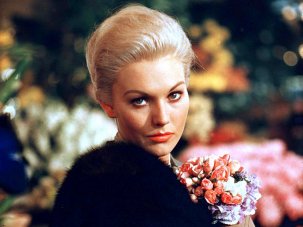
In our biggest ever film critics’ poll, the list of best movies ever made has a new top film, ending the 50-year reign of Citizen Kane.
Wednesday 1 August 2012
-
The Digital Edition and Archive quick link
Log in here to your digital edition and archive subscription, take a look at the packages on offer and buy a subscription.




